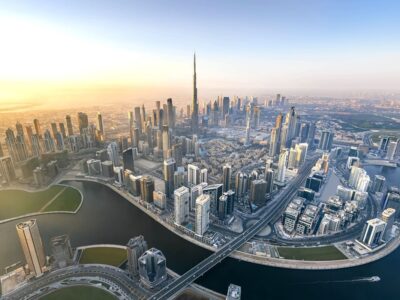With the spotlight focused on South Africa in the lead up to this year’s FIFA World Cup, the Miss World 2009 pageant returned to Johannesburg for the second year in December, with the goal of taking the event to the next level in regards to the use of lighting and presentation technologies.
Staged at the Gallagher Convention Centre in Midrand, Johannesburg, the pageant reunited the 2008 Miss World design team of Tim Dunn (lighting & visuals) and Dewet Meyer (set) of Gearhouse South Africa, who were challenged with the task of producing a vibrant and colourful production presentation with a distinctly African flavour as a dynamic backdrop to the event.
The primary goal was to ensure the event looked stunning on TV – the pageant’s core market. The telecast was directed by Ian Hamilton, recorded by SABC and broadcast live to 80 countries worldwide. For the first time the broadcast took in the US, India (both Hindi and English transmissions) and China via CCTV4, reaching an estimated combined audience of two billion. It also had to look good for the 3500 audience members who packed into the venue for the show.
Dunn took the opportunity to showcase the newest moving and digital lighting products from Czech Republic manufacturer Robe. The full technical production package was delivered by Gearhouse South Africa.
The set consisted primarily of an impressive 45m x 38m spherical structure circled by two dramatic radial rings that appeared to float above and beyond the stage.
The rings were painted white in a bid to maximise the carefully crafted lighting effects, while the forestage and other areas consisted of combinations of white and pale grey to allow lighting the freedom to add expression and texturing.
The front steps below the key lighting fixtures (29 x 5K fresnels) were clad with printed PVC for additional depth and to provide a contrasting background to the contestants when on camera. The entire structure was complemented by a surrounding white PVC cyc, with its support legs clad in the same finish.
ShowTex Middle East supplied 20 starcloths in total measuring over 500m².
At the 2008 event, Dunn broke new ground by being the first lighting tech to use Robe lighting’s new DigitalSpot 7000DTs and REDWash 3 192 LED wash lights on such a large scale.
This time round, Dunn was determined to push the boundaries further, employing more than 280 Robe fixtures in total. He stocked up on 72 Robe Robin 300 Series spot, wash and beam version fixtures, 72 of Robe’s most powerful moving light, the ColorSpot 2500E AT, 12 Robe ColorBeam 700E ATs and Robe CitySkape 48 LED wash fixtures, the latter of which were used to illuminate the edges of the set, its support legs and the cyc.
Other fixtures included 12 DigitalSpot 3000DTs and 42 Robe REDWash 3 192 LED wash fixtures. More than 280 moving and intelligent fixtures were fitted to the rig for the event, providing plenty of options for the lighting designers.
Describing the Robe technology used in the rig as “very exciting”, Dunn says he was mostly impressed by the versatility of the lighting fixtures used during the high-stakes production.
“It was refreshing to work with a company like Robe, which keeps developing inventive products and is prepared to invest energy and effort into them being used on such a high-profile TV broadcast,” he says.
All the overhead lighting was hung on six circular trusses plus a series of curved trusses, designed to harmonise with the set architecture.
The centres of each circle was filled with stretched white PVC forming a ceiling that could be lit and toned, making them particularly useful for low and wide-angled camera shots.The set rings were delineated by 50 x 30 mm plastic spheres internally lit with Anolis Ark-Link 3 colour changing LED strips.
Another significant inclusion in the visual mix was the use of 114 i-Pix Satellite LED ‘bricks’. The fixtures were pixel mapped to ensure the video content they displayed matched that broadcast using the DigitalSpots and on the main LED screen positioned to the rear of stage.
This matched all three digital lighting elements in colour and movement, creating delicate swirling effects across the main presentation space.
Dunn employed an MA Lighting grandMA full-size control console, networked together with seven NSPs (network signal processors) running a total of 24 DMX universes, controlling approximately 12,600 channels across the whole rig. Lighting control was networked via fibre optic cable, with one link to the FOH area. Dunn programmed the desk with lighting director Hugh Turner during five long and productive overnight sessions.
Marcel Wijnberger and Chris Grandin from Gearhouse Media created special playback video content that was stored on two MA media servers, triggered from the grandMA console. Wijnburger and Dunn also edited and produced a video for the opening “Umoja” production number whilst on site.
The lighting crew worked in two continuous shifts during the short installation period just a week before the show. The crew was chiefed by Lucky Nkosi.
The playback video, plus logos, stings and show graphics all appeared on the central LED screen, a 10 x 5 panel configuration of Lighthouse R16 supplied by LEDVision, output via a Barco Encore screen management system operated by Gearhouse AV’s Craig McGinn.
McGinn also received multiple camera and EVS feeds from SABC’s OB truck to output to two 8 x 4.5 metre side screens, each fed by a pair of double-stacked Christie 18K projectors.
For Jako de Wit from Gearhouse Audio, it was a relatively straightforward set up, requiring precision and good coverage. de Wit has worked in the Gallagher Convention centre on numerous previous occasions, so was well-acquainted with the nuances of the room.
At de Wit’s urging, Gearhouse flew main hangs of eight L’Acoustics V-DOSC cabinets a side, each with three dV-DOSC downfills, and seven single dV delays to cover the raised audience seating area. Six L’Acoustics HiQs were used for monitoring purposes, powered by LA8 amps.
De Wit mixed the show FOH using a Yamaha M7CL console, with active splits going to the OB truck.
Live mic feeds were sent to OB crew who in turn provided de Wit’s team with audio for the playback tracks, VT inserts and stings.
Monitors were driven from FOH, with a Yamaha LS9 located onstage for ‘local’ control as and when needed, managed by Nathi Ntuli.
The whole system was networked and run via fibre optic cable and processed via Dolby Lake units at FOH.
Gearhouse Audio also supplied 12 Shure Beta 58 hand held radio microphones and four lavaliers for the presenters.
Ultimately, the combination of great teamwork and the creative vision of Robe, Gearhouse, Tim Dunn, Dewet Meyer and all the various crews working on site ensured the delivery of yet another visually spectacular Miss World production, setting a new technical and creative benchmark for subsequent events to follow.






